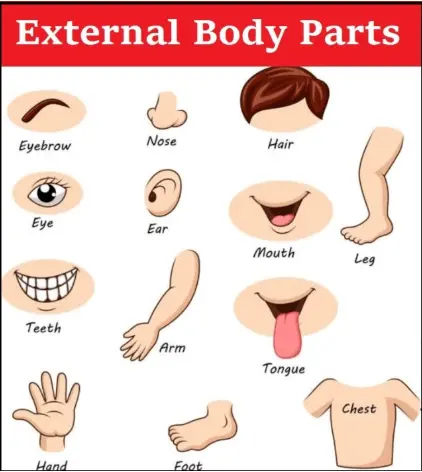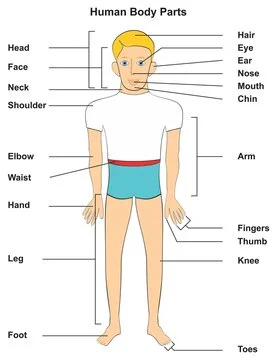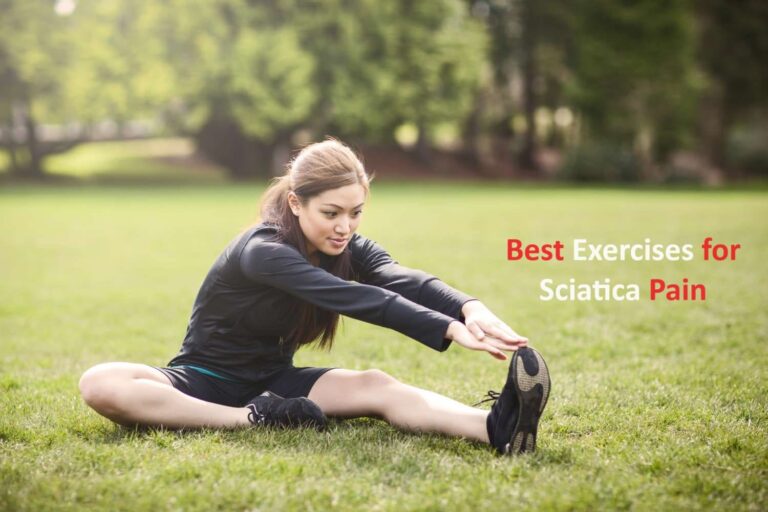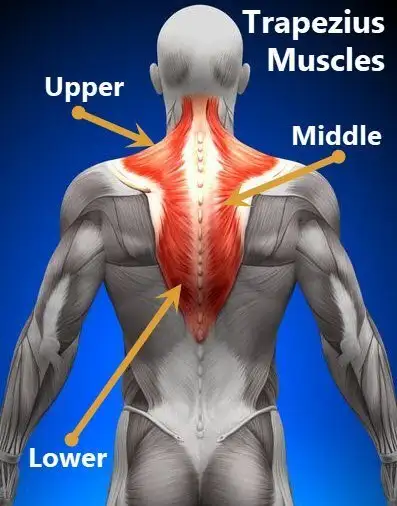Body Parts Name
Introduction
To begin with, the human body is truly remarkable. Each of the many components that make up the human body has a specific purpose. We use our bodies to perform all tasks. Allow us to introduce you to the various names for our body parts.
The various parts of a person, such as their mouth, nose, arms, and legs, that enable movement and sense of our surroundings are referred to as body parts. See the list of names for the various body parts below.
The human body can be compared to an intricate machine consisting of various parts. It is preserved by the various body parts operating normally. Our brain assists us in thinking and feeling in functioning as the control center. The blood that our heart pumps gives us energy.
As we breathe, our lungs help us absorb oxygen. Our bodies shape up like a frame by our bones. Our skin senses touch and protects us. Muscles allow us to move. Our bodies work together to keep us alive and well. Below in the article is a brief synopsis of some of the body parts and their significance.
Names of Human Body Parts
The various components of the human body are pointed out as body parts. Each of them has a distinct function, and they consist of tissues, organs, and structures. As an illustration, the brain regulates thoughts, the skin serves as a protective layer, the heart pumps blood, and the lungs aid in breathing.
Various body parts, each with a unique size and shape, cooperate to carry out vital functions for daily activities and survival. A wide range of human body parts includes are, such as the head, forehead, eye, ear, nose, jaw, neck, shoulder, arm, elbow, forearm, wrist, palm, fingers, thumb, chest, back, spine, abdomen, nave, hip, buttocks, leg, thigh, knee, calf, ankle, heel, foot, toes, and nail.
The mouth serves as a tool for eating and speaking, the ears for hearing, and the eyes for sight. The fingers and toes aid gripping and balance. Gaining an understanding of these body parts is essential to understanding how the human body works and how to keep one’s general health and well-being.
The Body’s parts:
Organ systems called sensory organs are found in every part of the human body. Names and functions vary amongst them all. Find out more about the fundamental components of the human body by examining the labeled diagram.
Our five sense organs each play a different role in our ability to perform various tasks.
- Sight,
- Hearing,
- Smell,
- Tongue,
- Skin
Below is a tabulated discussion of several body parts. List of Names of the 50 Body Parts
Head, Chest, Feet, Nails, Brain, Eyes, Back, Toes, Armpits, Skull, Ears, Spine, Hair, Ribs, Tonsils, Nose, Abdomen, Forehead, Lungs, Spleen, Mouth, Hips, Cheeks, Heart, Pancreas, Neck, Legs, Chin, Liver, Larynx Elbows, Knees, Wrist, Kidneys, Trachea Hands, Calves, Palm, Intestines, Esophagus Fingers, Ankles, Knuckles, Bladder, Arms
Different Body Part Types
Depending on where they are located, body parts can be broadly classified as internal or external. The internal body parts are concealed inside the body, shielded by different organs and tissues, and essential to the body’s overall operation, whereas the external body parts are seen and found on the body’s exterior.

- External body parts: The visible structures on the exterior of the body, such as the skin, limbs, eyes, ears, nose, mouth, and hair, are known as external body parts. These structures enable communication with the outside world.
- Internal body parts: Internal body parts carry out vital tasks while being hidden within the body. The heart, lungs, brain, liver, kidneys, and stomach are a few examples of organs that are essential to life and bodily functions.
Name of External Body Parts:
The structures of the human body that are located on the outside are known as external body parts. From the surface of the body, they are both visible and reachable. The skin, limbs (lungs and arms), eyes, ears, nose, mouth, and hair are a few examples. These components are engaged in sensory perception, physical activity, and interactions with the outside world.
- Head: The brain and sensory organs including the nose, ears, eyes, and mouth are located in the head, which is the upper portion of the body.
- Skin: The skin is the body’s largest organ. It acts as a barrier to keep out outside influences.
- Limbs: Arms and legs are considered limbs because they are used for movement, manipulation, and interaction with the outside world.
- Eyes: Our eyes are our visual organs, which enable us to see the outside world.
- Ears: Our ears are our sense of hearing and balance, which allows us to distinguish sound and stay balanced.
- Nose: The nose is used for both breathing and smell, which helps with scent recognition and air intake.
- Mouth: The mouth is used for speaking, tasting, and consuming food.
- Neck: The neck serves as the structure that joins the head and torso.
- Shoulders: The broad bones that connect and support the upper arms to the torso are called the shoulders.
- Chest: Vital organs like the heart and lungs are housed in the chest, which is the front portion of the body between the neck and the abdomen.
- Hips: The bony portions bordering the upper buttocks’ sides are called the hips.
- Buttocks: A muscle group at the back of the body called the buttocks supports the body’s weight when seated.
Name of Internal Body Parts:
On the other hand, internal body parts are those structures that are found inside the body, hidden beneath the skin and other external tissues. The organs and skeletal system of the body cover and shield these parts, which are not visible from the outside.
The heart, lungs, brain, liver, kidneys, stomach, intestines, and pancreas are internal body parts. Vital tasks pertaining to breathing, digestion, circulation, and other critical body functions are carried out via these sections.
- Heart: The heart is a pumping organ made of muscle that distributes blood throughout the circulatory system.
- Lungs: The breathing process and the exchange of carbon dioxide and oxygen with the blood are carried out by the lungs.
- Liver: The liver is an essential organ and is involved in metabolism and detoxification, among other processes.
- Kidneys: The kidneys are organs that remove waste from the blood and produce urine, which is then shed.
- Stomach: The stomach is the organ responsible for the partial digestion and breakdown of food.
- Brain: The brain processes information and controls many body functions. It serves as the body’s main control center.
- Intestines: Parts of the digestive system called the intestines are where nutrients are absorbed and the residual food is processed further. The large intestine and small intestine are the two main parts.
- Pancreas: The glandular organ known as the pancreas is responsible for controlling blood sugar levels and facilitating digestion.
Body Parts’ Significance
A person’s ability to perform a variety of tasks necessary for survival and general well-being depends on specific body parts. Every body part has a distinct purpose, and for the human body to stay healthy and function properly, these functions must work in harmony with one another.
A few main ideas emphasizing the significance of various body parts are as follows:
- Brain: The brain is the central nervous system of the body, regulating all bodily functions as well as processing information and feelings. Thinking, learning, and feeling are all made possible by it.
- Heart: The heart supplies oxygen and nutrients to organs and tissues throughout the body by pumping blood. It is necessary to keep the blood flowing and to keep life going.
- Eyes: The eyes allow us to see and comprehend our surroundings, which is what makes vision possible. Communication and interaction with the surroundings depend on them.
- Ears: Hearing and balance are both dependent on the ear. For mobility and spatial orientation, they allow us to hear sounds and stay balanced.
- Skin: The skin serves as a barrier to prevent infections and regulate body temperature. It is the largest organ in the body. In addition, it has nerve endings that give us sensations of pain, temperature, and touch.
- Bones and Muscles: Muscles aid in maintaining posture, allow movement, and offer support. In addition to giving structure and serving as a storehouse for minerals like calcium, bones also protect internal organs.
- Stomach and Intestines: The function of the stomach and intestines is essential for nutrient absorption and digestion. The intestine absorbs water and nutrients from the food that the stomach breaks down, giving the body the energy and materials it needs.
- Kidneys: The kidneys keep the body’s electrolyte and fluid balance in check by filtering waste and excess substances out of the blood. They also support blood pressure regulation.
Functions of Body Parts:

Eyes: The eyes serve the purposes of seeing and reading. Our eyes are constantly in use from the moment we wake up until we close them for sleep. These are just a handful of the everyday tasks that our eyes enable us to perform, including reading and seeing. View the photos down below.
Youngsters reading a book and watching TV
Nose: For breathing and smelling, it is a vital body part. In the human face, the nose is present in the center, above the mouth. The following lists a few instances of everyday tasks where our sense of smell is useful.
Tongue: Taste perception is an organ of the tongue. Taste, chew, swallow, and speak are all made possible by the tongue.
Ears: Our ears enable us to distinguish between various sounds. Through our ears, we are able to perceive sounds such as music, conversations, and ambient noise.
Skin: The human body is covered with the skin. More area of our body is devoted to our skin than any other. It guards against dryness and protects the body. We can feel and touch things thanks to our skin.
Lower Body: Our species is bipedal. We can run, play, skip, and walk because of our legs.
Hands: We can write, clap, eat, and hold objects using our hands. Each hand has ten fingers in the human hand.
Neck: To move our heads, we use our necks. We can turn our face to look at something because it permits the head to move from side to side.
Summary
There are numerous parts to our body, each with a unique name and purpose. The five sense organs that we have enable us to perform various tasks.
- Our noses allow us to smell
- Our tongues allow us to taste
- Ears allow us to hear sounds
- Our skin allows us to feel and touch
- Our eyes allow us to see and read
- We can work, play, run, and skip better with our legs.
FAQs
How many bodily parts are there?
The bodily parts are the hand, eyes, ears, nose, mouth, tongue, legs, fingers, neck, and skin.
What five sense organs are there?
The tongue, ears, eyes, and skin are the five sense organs.
What does the neck do?
The neck is responsible for allowing us to turn our heads from side to side.
How many hands and legs are there in a human?
Two hands and two legs are all we have.
References
S. (November 2, 2023). Body Parts Names: English names for all 50 body parts. Career Strength. body-parts-name at https://www.careerpower.in/school/biology
T. (September 27, 2023). The Turito website explains the structure and function of the human body parts. https://www.turito.com/learn/biology/human-body-parts-structure-and-function-grade-1






